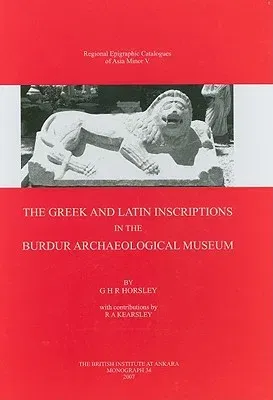G R H Horsley
(Author)The Greek and Latin Inscriptions in the Burdur Archaeological MuseumHardcover, 20 December 2007

Qty
1
Turbo
Ships in 2 - 3 days
In Stock
Free Delivery
Cash on Delivery
15 Days
Free Returns
Secure Checkout

Part of Series
British Institute at Ankara Monograph
Part of Series
Regional Epigraphic Catalogues of Asia Minor
Print Length
330 pages
Language
English
Publisher
British Institute of Archaeology at Ankara
Date Published
20 Dec 2007
ISBN-10
1898249180
ISBN-13
9781898249184
Description
Product Details
Author:
Book Format:
Hardcover
Country of Origin:
GB
Date Published:
20 December 2007
Dimensions:
29.46 x
21.08 x
2.54 cm
ISBN-10:
1898249180
ISBN-13:
9781898249184
Language:
English
Location:
London, England
Pages:
330
Weight:
1542.21 gm